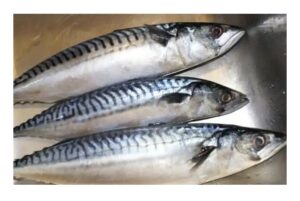
Fish is a vital source of protein, vitamins, and minerals, and its consumption has been linked to a wide range of health benefits, including a lower risk of heart disease and stroke. However, some types of fish contain high levels of mercury, which can have negative effects on health, especially when consumed in large quantities. In this article which is in accordance to healthline, we will discuss the types of fish you should avoid eating due to their mercury content and the negative impact it can have on your health.
WHAT IS MERCURY?
Mercury is a heavy metal that occurs naturally in the environment and can also be released into the air and water through human activities such as mining and burning fossil fuels. When mercury enters the water, bacteria transform it into methylmercury, a highly toxic form that accumulates in fish and shellfish.
WHAT ARE THE HEALTH RISKS OF MERCURY?
Exposure to high levels of mercury can have serious health consequences, especially for infants, young children, and pregnant women. It can damage the nervous system, impair brain development in fetuses and children, and cause vision and hearing problems. In adults, high levels of mercury can cause neurological problems, memory loss, and kidney damage.
TYPES OF FISH TO AVOID BECAUSE OF MERCURY CONTENT
1. SHARK
Shark is one of the most mercury-contaminated fish, and its consumption should be avoided, especially by pregnant women and young children. According to the US Environmental Protection Agency (EPA), a 150-pound woman should eat no more than one 6-ounce serving of shark per month, while a 30-pound child should eat no more than one 1.5-ounce serving per month.
2. KING MACKEREL
King mackerel is another fish that is high in mercury and should be avoided, especially by pregnant women and young children. The EPA recommends that a 150-pound woman should eat no more than one 4-ounce serving of king mackerel per month, while a 30-pound child should eat no more than one 1-ounce serving per month.
3. SWORDFISH
Swordfish is a large predatory fish that contains high levels of mercury and should be avoided, especially by pregnant women and young children. The EPA recommends that a 150-pound woman should eat no more than one 4-ounce serving of swordfish per month, while a 30-pound child should eat no more than one 1-ounce serving per month.
4. TILEFISH
Tilefish is a type of fish that is high in mercury and should be avoided, especially by pregnant women and young children. The EPA recommends that a 150-pound woman should eat no more than one 3-ounce serving of tilefish per month, while a 30-pound child should eat no more than one 0.6-ounce serving per month.
5. TUNA
Tuna is a popular fish eaten all over the world, and while it is a good source of protein and omega-3 fatty acids, it can also be high in mercury. There are two types of tuna that are commonly consumed: albacore tuna (white tuna) and skipjack tuna (light tuna). Albacore tuna contains more mercury than skipjack tuna, and pregnant women and young children should limit their consumption of albacore tuna to no more than one 6-ounce serving per week. Skipjack tuna is lower in mercury and can be consumed in larger quantities, but pregnant women and young children should eat no more than 12 ounces per week.
6. MARLIN
Marlin is a large predatory fish that is high in mercury and should be avoided, especially by pregnant women and young children. The EPA recommends that a 150-pound woman should eat no more than one 4-ounce serving of marlin per month, while a 30-pound child should eat no more than one 1-ounce serving per month.
7. ORANGE ROUGHY
Orange roughy is a deep-sea fish that is slow-growing and can live up to 150 years, making it particularly susceptible to overfishing. It is also high in mercury and should be avoided, especially by pregnant women and young children. The EPA recommends that a 150-pound woman should eat no more than one 4-ounce serving of orange roughy per month, while a 30-pound child should eat no more than one 1-ounce serving per month.
Fish is a valuable source of nutrients that can provide numerous health benefits when consumed in moderation. However, it is essential to be aware of the types of fish that are high in mercury and should be avoided, especially by pregnant women and young children. By choosing low-mercury fish varieties and following the recommended serving sizes, you can safely incorporate fish into your diet and enjoy its many health benefits.









